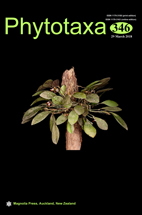Abstract
During a study of the diatoms of streams in Cyprus, two Ulnaria species were difficult to identify using current taxonomic concepts, which created difficulties when trying to understand their ecological preferences. As a result, both taxa were investigated in detail using light (LM) and scanning electron (SEM) microscopy. Literature searches showed that one of these corresponds to Synedra Monodi Guermeur, a “forgotten” species often misidentified as Fragilaria biceps. This species was shown to belong to the genus Ulnaria, and a new combination is provided together with LM and SEM illustrations and an expanded description. U. monodii appears to be widely distributed and was sometimes abundant. It is an important species in diatom assemblages in streams with relatively warm waters (Mediterranean or tropical / subtropical climate). The second species, one of several forms to which the name Ulnaria acus has often been inappropriately applied, is described as a species new to science (Ulnaria acuscypriacus sp. nov.). The new species differs from all similar taxa by a combination of characters including width, outline, central area shape, and the possession of biseriate areolae. A comprehensive environmental dataset allowed the ecological preferences of Ulnaria monodii comb. nov. to be established. This species was generally associated with low concentrations of total nitrogen and total phosphorus, corresponding to slightly nutrient enriched situations. By contrast, the low number of occurrences of U. acuscypriacus sp. nov. did not allow us to identify clear nutrient preferences. U. acuscypriacus sp. nov. was observed across a large conductivity range, suggesting that it may be more tolerant of brackish conditions than Ulnaria monodii comb. nov.

